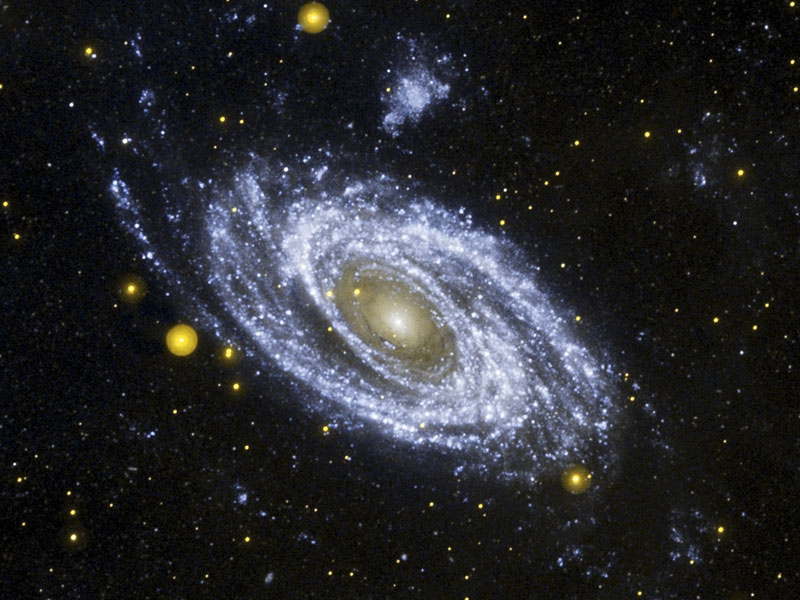
|
Explanation: Where are the hot stars in M81, one of the closest major spiral galaxies? To help find out, astronomers took a deep image in ultraviolet light of the sprawling spiral with the Earth-orbiting Galex telescope. Hot stars emit more ultraviolet than cool stars, and are frequently associated with young open clusters of stars and energetic star forming regions. Magnificent spiral galaxy M81, slightly smaller in size to our own Milky Way Galaxy, shows off its young stars in its winding spiral arms in the above image. Less than 100 million years old, the young stars are blue in the above false-color Galex image and seen to be well separated from the older yellowish stars of the galactic core. Visible above M81 is a satellite galaxy dubbed Holmberg IX. Studying the unexpectedly bright ultraviolet glow of this small irregular galaxy may help astronomers understand how the many satellites of our own Milky Way Galaxy developed. M81, visible through a small telescope, spans about 70,000 light years and lies about 12 million light years away toward the constellation of the Great Bear (Ursa Major).
|
January February March April May June July August September October November December |
| ||||||||||||||||||||||||||||||||||||||||||||||||
NASA Web Site Statements, Warnings, and Disclaimers
NASA Official: Jay Norris. Specific rights apply.
A service of: LHEA at NASA / GSFC
& Michigan Tech. U.
Based on Astronomy Picture
Of the Day
Publications with keywords: M81 - ultraviolet
Publications with words: M81 - ultraviolet
See also:
